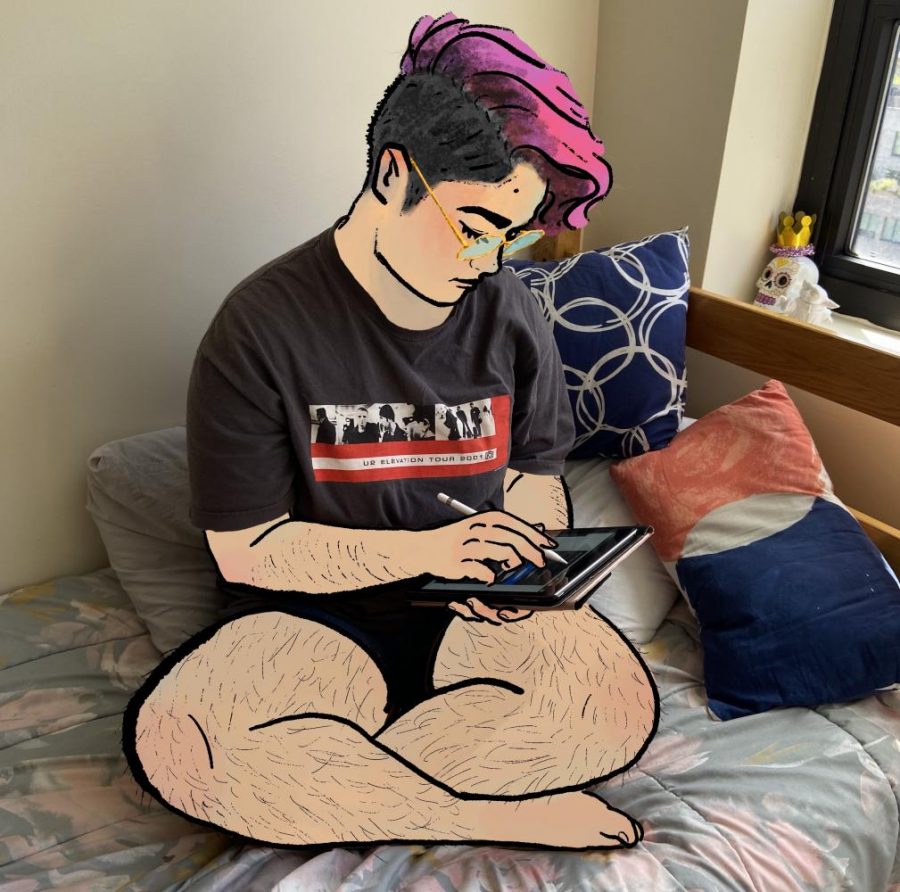What does it mean to be an artist? To some, an artist has to paint a picture, sing a song or bust a move. To others, an artist has to have their name shouted by thousands of adoring fans or written in a playbill. While these conceptions are mainstream and often accurate, I cannot help but challenge how unnecessarily rigid such associations are.
These definitions focus on what it meant to be an artist a year ago: creating fine art, sharing it in large group settings and participating in expansive promotional campaigns. However, we do not live in the same world anymore; in a matter of months, the entire arts industry was turned upside down due to the pandemic and its safety protocols. We cannot collaborate in person. We cannot congregate in person. We cannot create in person. So if the world is a completely different place, how can we even consider using an outdated interpretation of what an artist is?
Right now, artists should be challenging dated practices, creating new opportunities and connecting in unconventional ways to ultimately improve their talents and keep their industries alive. I know this is easier said than done, but hear me out.
Artists are inherently perseverant. When society pressures people to conform, artists find a way to stay true to themselves and help others find their voices — like Lady Gaga and the “Born This Way Foundation.” When institutions silence or marginalize individuals because of their racial, religious, gender or sexual identity, artists shout to be heard — such as “Glee” star Samantha Marie Ware speaking out about the mistreatment she faced on set. When it feels as if every original idea has been thought of, artists always invent new genres.
The pandemic resulted in a period of time filled with an infinite amount of questions, but uncertainty is the very environment artists flourish in. Equipped to adapt to the given situation, explore artistic impulses and tackle any obstacle, artists are taking control of their work more than ever to focus on what really matters: how the art evokes an emotion, challenges themselves or educates the public.
These past six months have shown that when the flashing lights and adoring fans disappear, all that is left is the art; Taylor Swift may not be touring the world, but her new album “Folklore” allowed her to experiment with a new sound; filmmakers may not be on set, yet “Homemade” on Netflix is a way for them to discover what they are curious about through short films. The lack of public interaction does not mean artists or their art are worth any less. If anything, an artist’s identity and art are more valuable than ever before.
So what does this mean for artists all over the world? While this time may seem like some sort of punishment, try to think of it as an opportunity. Right now is not a time to remain complacent, but a moment to truly focus on who you are and where you want to go without any distractions. Listen to your voice. Pursue your passions. Find new ones. Instead of waiting for change, be the change. Set a goal. Try your best. Didn’t meet it? That’s okay.
To be an artist, you must make the most out of every situation by refining your skills, defining your aspirations and redesigning what being an artist means to you and only you — ignore everyone else. Remember the artist you were and imagine the better artist you are destined to become. Rejuvenate. Innovate. Create.
A version of this article appeared in the Monday, August 31, 2020 e-print edition. Email Sasha Cohen at [email protected].























































































































































